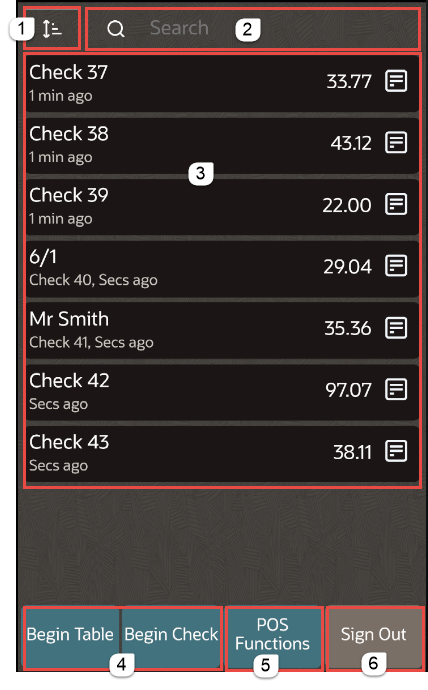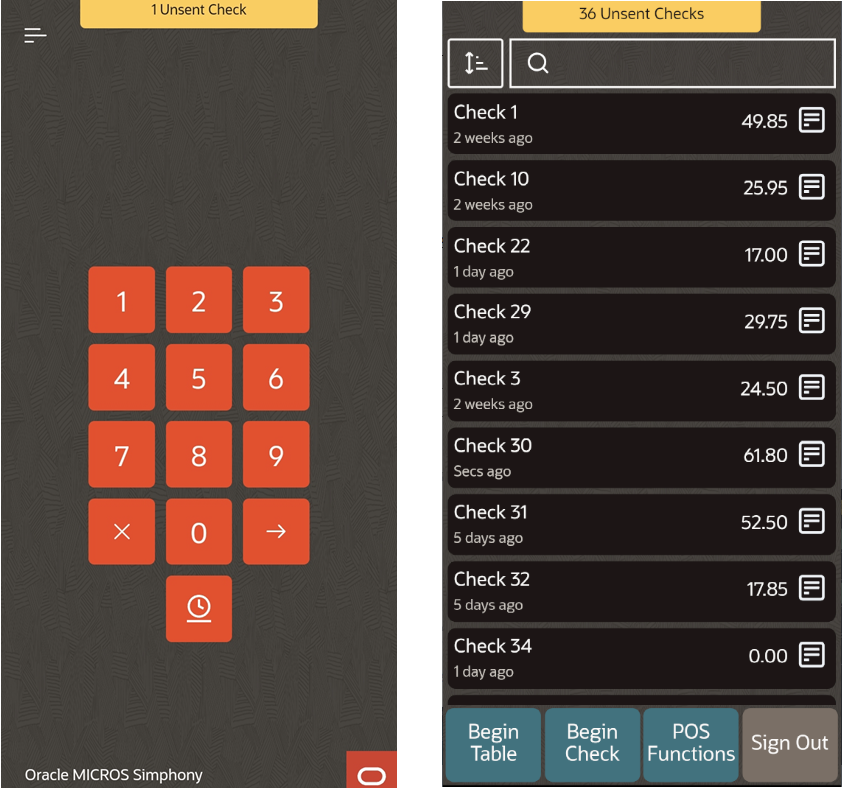Home
After you sign in to a mobile phone or handheld device, the home page appears. The home page shows open checks as buttons, and you can use the sort icon to access the sort page.
Figure 1-23 TSR Home Page on Mobile Phones and Handheld Devices

The following table describes the areas called out in the image.
Table 1-13 Mobile Device TSR Home Page Description
| Callout Number | Area | What You Use It For |
|---|---|---|
|
1 |
Sort icon |
Click the Sort icon ( |
|
2 |
Search |
Click in the Search field ( |
|
3 |
Open Checks buttons |
View details such as the table number, check name and number, and total. Click the View Check icon ( |
|
4 |
Begin check buttons |
Click Begin Table to begin a check by table number or table ID. The system prompts for a table number or name, and then moves to the Transaction page. The Transaction page shows the seat number selector when a table number or ID is entered against a check. Click Begin Check to have the mobile device automatically generate the next check number and move to the Transaction page. |
|
5 |
POS Functions button |
Access closed check functions using POS Functions (for example, check and printing operations). Access Manager Procedure functions, such as updating and reloading the database, opening the Property Management Console (PMC) to view log files, and closing the Simphony Essentials mobile application. |
|
6 |
Sign Out button |
Return to the Sign In page using Sign Out. |
Unsent Checks Warning
Warning messages appear on POS clients when a device with unsent checks is disconnected from the Check and Posting Service (CAPS). The messages appear as a translucent yellow banner at the top of all pages outside a transaction. They do not appear when a transaction is in progress so as not to distract from, or slow down, the order taking process.
After posting a transaction, there is a 30-second delay to enable checks to send before a warning message appears. The warnings make the server aware of an issue so that they can either move the device back into network range or alert a manager that there is a connection issue.
The warning messages show the number of unsent transactions on the device so that when a solution is found, servers can see the number decrease and know that the issue has been resolved. Warnings appear on Android devices and Linux workstations for TSR, QSR, and Bar operations when the device is offline from CAPS. The warning messages appear by default and cannot be switched off.
Figure 1-24 TSR Unsent Checks on Mobile Phones and Handheld Devices

Parent topic: Table Service Restaurant Operations